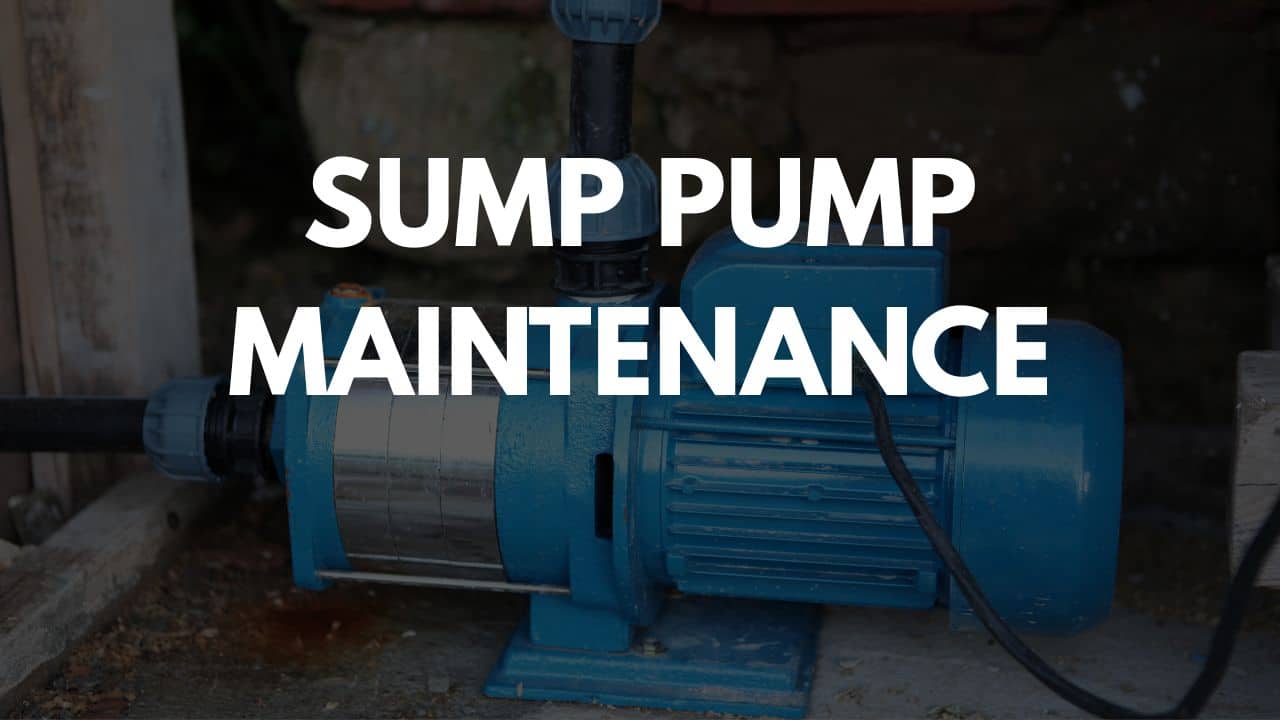
Sump Pump Maintenance: How to Keep It Running When You Need It Most
If there’s one piece of equipment that quietly protects your home from thousands of dollars in water damage, it’s your sump pump. Yet most homeowners don’t think about it until the basement is flooded and the damage is done.
I’ve been in a lot of basements over the years, and I can tell you this: a little maintenance goes a long way. This guide is here to help you keep your sump pump running strong and ready when it matters most.
⚡️ Why Sump Pump Maintenance Matters
Neglect is the number one cause of pump failure. Your sump pump isn’t a set-it-and-forget-it device—it’s more like a smoke detector or furnace. It needs checkups.
A failed sump pump can lead to:
- Flooded basements
- Mold and mildew
- Damaged foundation and drywall
- Insurance headaches
The good news? Most problems are preventable with seasonal upkeep.
📆 Monthly Maintenance Checklist
✅ Test the Pump
Pour a bucket of water into the pit. The float should rise, activate the pump, and remove the water quickly. If it doesn’t turn on or struggles to clear the pit, something’s wrong.
✅ Check the Power
Make sure the plug is secure and the circuit hasn’t tripped. A GFCI outlet may need to be reset.
✅ Clear the Pit
Remove any debris, mud, or silt that’s accumulated in the basin. This keeps the float from getting stuck and prevents clogging.
✅ Inspect the Float
The float should move freely. If it snags on the wall or debris, it may not trigger the pump when needed.
🌟 Quarterly or Seasonal Deep Check
✅ Clean the Pump Intake
Unplug the pump and pull it out of the pit. Rinse the screen or intake holes to remove any sediment buildup.
✅ Check the Discharge Line
Look for clogs, kinks, or signs of freezing. Make sure water flows freely away from your foundation.
✅ Test the Check Valve
This one-way valve prevents water from backflowing into the pit. If water comes back down the pipe after pumping, it might be failing.
✅ Examine for Corrosion or Rust
Especially on the float switch and housing. Surface rust is okay, but widespread corrosion can mean it’s time for a replacement.
🏡 Annual Preventive Steps
- Remove and inspect the entire pump if it’s more than a few years old
- Lubricate moving parts (if your model allows it)
- Replace the battery in your backup system if you have one
- Flush the discharge line once a year to prevent sediment buildup
💪 Maintenance Tips From the Field
- Install a lid over the sump pit to keep debris and pets out
- Mark a test date on your calendar at the start of each season
- Add a water sensor alarm near the pit for extra peace of mind
- Keep a backup pump or utility pump on hand in case of failure
- Check after every major storm even if the power stayed on
❓ FAQ: Sump Pump Maintenance Edition
Q: How often should I test my sump pump?
A: Once a month with a bucket of water. Quarterly deep checks are smart, especially in rainy climates.
Q: What’s the easiest way to know if it’s working?
A: Pour water in the pit. If it drains quickly and quietly, you’re in good shape.
Q: Should I unplug the pump if I’m gone for a while?
A: No. It should always stay plugged in unless you’re doing maintenance.
Q: Can I use bleach to clean the pit?
A: Use vinegar or a mild detergent instead. Bleach fumes can corrode metal and rubber parts.
Q: When should I replace the pump?
A: If it’s more than 7–10 years old, starts running noisily, or struggles to clear the pit, it’s time.
A sump pump is a small machine doing a big job. If you want it to protect your home, you’ve got to give it some attention now and then. Trust me—five minutes a month beats a flooded basement any day.
If you want help checking your system or setting up a maintenance routine, I’m just a call away.




No Comments
Sorry, the comment form is closed at this time.